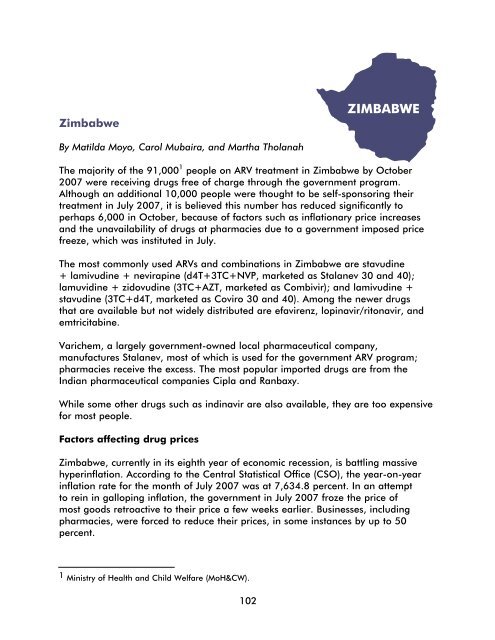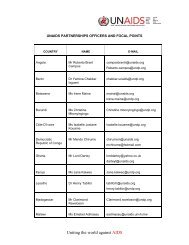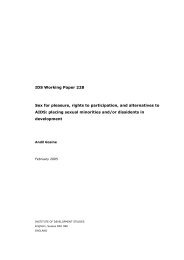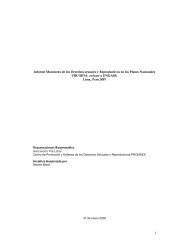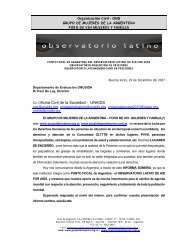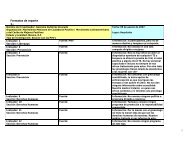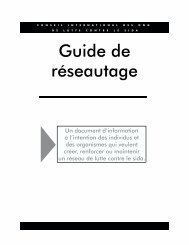Missing the Target #5: Improving AIDS Drug Access ... - CD8 T cells
Missing the Target #5: Improving AIDS Drug Access ... - CD8 T cells
Missing the Target #5: Improving AIDS Drug Access ... - CD8 T cells
You also want an ePaper? Increase the reach of your titles
YUMPU automatically turns print PDFs into web optimized ePapers that Google loves.
ZimbabweBy Matilda Moyo, Carol Mubaira, and Martha TholanahThe majority of <strong>the</strong> 91,000 1 people on ARV treatment in Zimbabwe by October2007 were receiving drugs free of charge through <strong>the</strong> government program.Although an additional 10,000 people were thought to be self-sponsoring <strong>the</strong>irtreatment in July 2007, it is believed this number has reduced significantly toperhaps 6,000 in October, because of factors such as inflationary price increasesand <strong>the</strong> unavailability of drugs at pharmacies due to a government imposed pricefreeze, which was instituted in July.The most commonly used ARVs and combinations in Zimbabwe are stavudine+ lamivudine + nevirapine (d4T+3TC+NVP, marketed as Stalanev 30 and 40);lamuvidine + zidovudine (3TC+AZT, marketed as Combivir); and lamivudine +stavudine (3TC+d4T, marketed as Coviro 30 and 40). Among <strong>the</strong> newer drugsthat are available but not widely distributed are efavirenz, lopinavir/ritonavir, andemtricitabine.Varichem, a largely government-owned local pharmaceutical company,manufactures Stalanev, most of which is used for <strong>the</strong> government ARV program;pharmacies receive <strong>the</strong> excess. The most popular imported drugs are from <strong>the</strong>Indian pharmaceutical companies Cipla and Ranbaxy.While some o<strong>the</strong>r drugs such as indinavir are also available, <strong>the</strong>y are too expensivefor most people.Factors affecting drug pricesZimbabwe, currently in its eighth year of economic recession, is battling massivehyperinflation. According to <strong>the</strong> Central Statistical Office (CSO), <strong>the</strong> year-on-yearinflation rate for <strong>the</strong> month of July 2007 was at 7,634.8 percent. In an attemptto rein in galloping inflation, <strong>the</strong> government in July 2007 froze <strong>the</strong> price ofmost goods retroactive to <strong>the</strong>ir price a few weeks earlier. Businesses, includingpharmacies, were forced to reduce <strong>the</strong>ir prices, in some instances by up to 50percent.1 Ministry of Health and Child Welfare (MoH&CW).102


